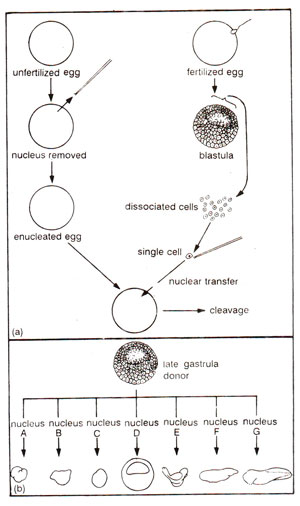
Fig. 38.1. (a) Technique of transplantation of a nucleus from a blastula stage into an enucleated stage; (b) result of transplantation of several gastrula nuclei in the frog Rana.
We often argue that all cells of an organism are identical in its genetic content and that the development proceeds by differential expression of these genes. The
totipotent nature of differentiated cells in many organisms (particularly plants) is often put forward as an evidence suggesting that all cells are similar. Cytological examination and DNA content analysis also, in most cases, revealed that same chromosome number and same DNA contents (barring exceptions like antibody producing cells, etc.) are found in all cells. However, nuclear transplantation experiments (Fig. 38.1) suggested that in frog (
Rana)
, the somatic nuclei from the
blastula cells and those from the
gastrula stage each differ among themselves (due to epigenetic changes), so that after gastrulation the nuclei differentiate irreversibly. However, in contrast to this situation in
Rana, the situation in
Xenopus differs, where the nuclei of both blastula as well as gastrula are totipotent and, when transplanted in eggs, can give rise to normal adults. It has, however, been shown that the differentiated cells from a variety of tissues do differ qualitatively, one of these differences being the degree of methylation or demethylation of DNA representing different genes, a phenomenon proved to be involved in the regulation of gene expression.

Fig. 38.1. (a) Technique of transplantation of a nucleus from a blastula stage into an enucleated stage; (b) result of transplantation of several gastrula nuclei in the frog Rana.





